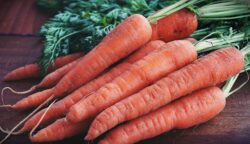Gardening in Alberta presents a unique set of challenges and rewards due to its climate and extended daylight hours during the summer months.
This article aims to provide gardeners with comprehensive guidance on the optimal times and methods for planting vegetables in Alberta, ensuring a successful and bountiful harvest.
When to Plant a Successful Vegetable Garden in Alberta
The key to a thriving vegetable garden in Alberta lies in understanding the local growing season and soil conditions.
Alberta’s growing season is relatively short, with about 115 frost-free days.
However, the region benefits from long summer days that significantly contribute to vegetable growth.
Soil Preparation and Timing
Before planting, it’s crucial to ensure that the soil has warmed and dried from the snowmelt.
The ideal time for most in-ground and raised bed gardens to be ready for planting is by the end of April or the beginning of May, depending on the weather and snow melt.
The soil should be rich, loamy, and high in organic content to promote healthy vegetable growth. Vegetables thrive in spaces that receive at least eight hours of direct sunshine daily.
Vegetables Suited for Alberta’s Climate
While most vegetables do well in Alberta, some of the easiest and most rewarding for beginners include beans, peas, carrots, tomatoes, and potatoes.
These vegetables are well-suited to Alberta’s climate and soil conditions, offering a great starting point for new gardeners.
Commonly Planted Vegetables in Alberta:
1. Beans
- Planting Time: Direct sow outdoors in early to mid-June, after the last frost when the soil has warmed.
- Growing Tips: Prefer warm soil and full sun. Water regularly, especially during flowering and pod formation.
2. Carrots
- Planting Time: Sow seeds directly in early spring, as soon as the soil can be worked.
- Growing Tips: Require sandy, well-drained soil. Thin seedlings to prevent crowding and ensure proper root development.
3. Peas
- Planting Time: Plant as early as the soil can be worked in spring, a few weeks before the last frost.
- Growing Tips: Support climbing varieties with trellises. Keep the soil moist but not waterlogged.
4. Tomatoes
- Planting Time: Start indoors 6-8 weeks before the last frost. Transplant outdoors when the danger of frost has passed.
- Growing Tips: Require full sun and well-draining soil. Use stakes or cages to support plants.
5. Lettuce
- Planting Time: Sow directly in early spring and again in late summer for a fall harvest.
- Growing Tips: Prefers cooler temperatures and can tolerate partial shade. Keep soil consistently moist.
6. Potatoes
- Planting Time: Plant in spring, once the risk of frost has passed and the soil is workable.
- Growing Tips: Use well-drained soil and hill the earth around plants to encourage tuber development.
7. Cucumbers
- Planting Time: Sow seeds directly or transplant seedlings outdoors after the last frost when the soil is warm.
- Growing Tips: Require full sun and plenty of space or a trellis for climbing varieties. Keep soil moist.
8. Zucchini
- Planting Time: Direct sow or transplant seedlings after the last frost when the soil has warmed.
- Growing Tips: Plant in fertile, well-drained soil in full sun. Water regularly, avoiding wetting the leaves.
9. Spinach
- Planting Time: Sow seeds directly in early spring as soon as the soil can be worked.
- Growing Tips: Prefers cool weather and moist, nitrogen-rich soil. Harvest leaves when they are young and tender.
10. Beets
- Planting Time: Direct sow seeds in the soil 3-4 weeks before the last spring frost.
- Growing Tips: Grow in full sun to light shade in well-drained soil. Thin seedlings to avoid crowding.
11. Onions
- Planting Time: Plant onion sets or seedlings in early spring, as soon as the ground is workable.
- Growing Tips: Require full sun and well-drained soil. Keep the area weed-free and water regularly.
12. Radishes
- Planting Time: Sow directly in the garden in early spring and again in late summer for a fall crop.
- Growing Tips: Easy to grow in full sun and fertile, well-drained soil. Harvest when roots are small and tender.
13. Swiss Chard
- Planting Time: Sow seeds directly in the garden in early spring, through summer for a continuous harvest.
- Growing Tips: Grows well in both full sun and partial shade. Keep soil moist for best leaf production.
14. Kale
- Planting Time: Direct sow in early spring or late summer for a fall harvest.
- Growing Tips: Tolerates cool temperatures and can grow in full sun to partial shade. Water regularly.
15. Garlic
- Planting Time: Plant cloves in the fall for a summer harvest the following year.
- Growing Tips: Requires full sun and well-drained soil. Mulch over winter to protect from severe cold.
Further Sections Expanding on the Topic
- Starting Seeds Indoors: For certain vegetables, starting seeds indoors can give them a head start on the growing season. This is particularly useful for plants that have a longer maturity period or are sensitive to cold.
- Transplanting: Understanding which vegetables transplant well and the optimal time for transplanting to your garden is crucial for success.
- Companion Planting: Companion planting can enhance vegetable growth, deter pests, and maximize the use of space in your garden.
FAQ: Planting Vegetables in Alberta
- What are the best vegetables to grow in Alberta?
- Beans, peas, carrots, tomatoes, and potatoes are among the best choices for Alberta gardens.
- When is the soil ready for planting?
- The soil is ready when it has warmed and dried down from the snowmelt, typically by the end of April or the beginning of May.
- Can I start seeds indoors in Alberta?
- Yes, starting seeds indoors can be beneficial for vegetables that require a longer growing season.
Planting Vegetables in Alberta: A Guide for Gardeners
In conclusion, planting vegetables in Alberta requires careful consideration of timing, soil preparation, and choosing the right vegetables that thrive in the local climate.
With the right approach, Alberta gardeners can enjoy a fruitful and rewarding gardening season.
In Summary
- Alberta’s short growing season and long summer days are conducive to vegetable gardening.
- Soil preparation and understanding the right planting time are crucial for success.
- Beans, peas, carrots, tomatoes, and potatoes are among the top vegetables to grow in Alberta.
- Starting seeds indoors and transplanting can extend the growing season for certain vegetables.
- Companion planting can enhance vegetable growth and garden productivity.
Sources for Further Reading and Guidance
- Alberta Planting Calendar – Farm Harvested
- Dry Beans for Producers – Alberta Pulse Growers
- Gardening in Alberta: A Comprehensive Guide – Offers practical tips and downloadable charts for planting and seeding vegetables in Zone 3 and 4 gardens, including Alberta.
- The Old Farmer’s Almanac Planting Calendar – Provides planting dates based on zip codes or postal codes, tailored to local weather conditions.





